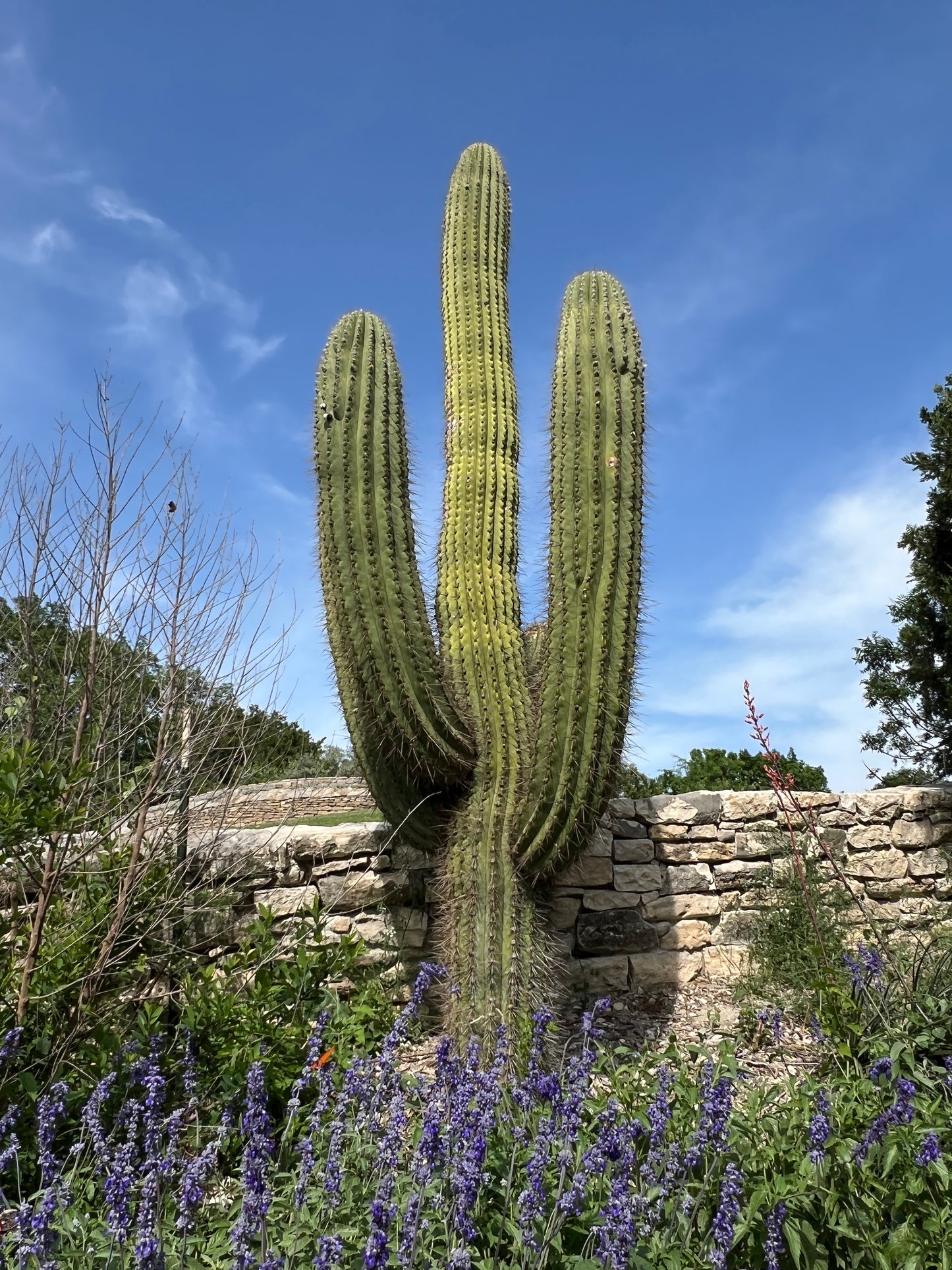Floridaseeds
Saguaro Cactus 100 Seeds Carnegiea gigantea
Saguaro Cactus 100 Seeds Carnegiea gigantea
Couldn't load pickup availability
Carnegiea gigantea, commonly known as the saguaro cactus, is a species of cactus native to the Sonoran Desert in the southwestern United States and northwestern Mexico. It is perhaps the most iconic and recognizable cactus species, characterized by its tall, columnar shape, ribbed surface, and large, white flowers. The saguaro cactus can grow to impressive heights, with some specimens reaching up to 40 feet (12 meters) tall and living for over 150 years. Here's a description of Carnegiea gigantea:
Appearance: The Saguaro cactus is renowned for its tall, columnar shape, which can reach heights of up to 40 to 60 feet (12 to 18 meters) or more in some cases. Its trunk is typically columnar and ribbed, with a waxy, bluish-green skin.
Arms: While not all Saguaros develop arms, those that do usually begin to grow them when they reach 50 to 100 years of age. These arms typically grow upward and can number from zero to over a dozen, depending on factors such as age, genetics, and environmental conditions.
Flowers: Carnegiea gigantea produces white, funnel-shaped flowers with yellow centers that bloom at the ends of its branches. These flowers typically appear in late spring to early summer and are pollinated by bats, birds, and insects.
Fruit: After flowering, the Saguaro produces red or reddish-purple, oval-shaped fruits that are edible and contain numerous small black seeds. These fruits are an important food source for various desert wildlife, including birds, mammals, and insects.
Habitat: Saguaro cacti are typically found in rocky, well-drained soils of the Sonoran Desert at elevations ranging from sea level to around 4,000 feet (1,200 meters). They thrive in arid and semiarid environments with hot summers and mild winters.
Adaptations: To survive in its harsh desert environment, Carnegiea gigantea has several adaptations. Its shallow root system extends widely to capture water from rainfall, and its thick, pleated stem stores water to sustain the plant during periods of drought.
Ecological Importance: The Saguaro cactus plays a crucial role in the desert ecosystem, providing shelter and nesting sites for birds such as Gila woodpeckers and Gilded Flickers. Its fruits also serve as a vital food source for desert wildlife, contributing to the overall biodiversity of the region.
Growing Instructions
- The seeds like sandy, well-drained soil. Fill a pot with moist cactus mix or used a mixture of sand and peat moss, perlite or vermiculite. Use a pot that has drainage holes in the bottom.
- Sow the seeds on the surface of the soil.
- Cover the seeds with a thin layer of soil.
- Water the soil with a mister or by placing the pot in a saucer of water. The soil will absorb the water.
- Place the pots in an area with warm temperatures in indirect sun or part shade. The seeds germinate in a few days. Do not overwater the plants.
- When the seedlings are a few inches tall, they can be transplanted.
















